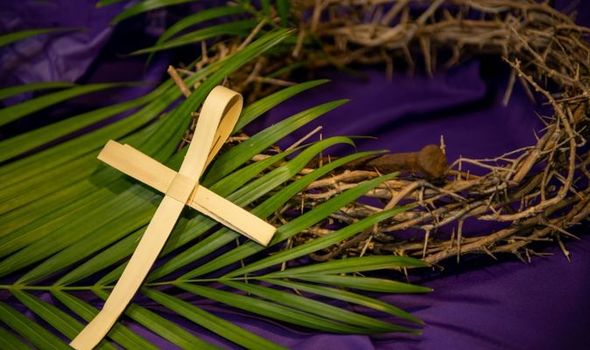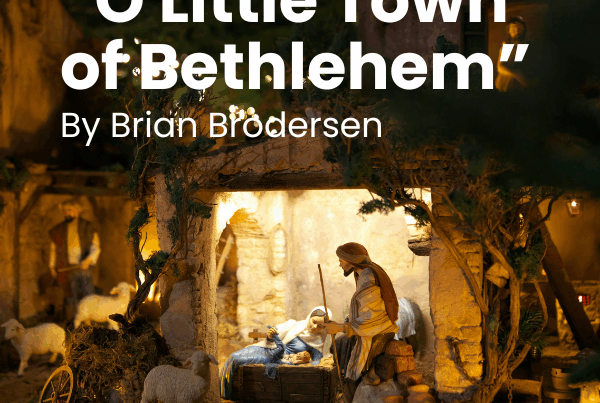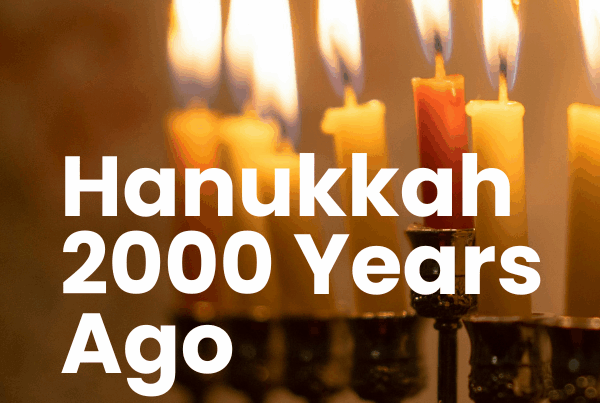
On our wedding day, as my wife was walking down the aisle, she looked at me intently, and the big question in her mind was, “Is he going to do it?” Her friend’s husband had done it at their wedding, and she wondered if I would too. But much to her dismay, I did not cry when she walked down the aisle. She asked me later on why I had not cried. “Why would I?”, I asked. “That was a moment to celebrate, not to cry!”
And yet, the Gospel of Luke tells us, that on Palm Sunday, when everyone else was celebrating and rejoicing, Jesus was crying. Why? The answer draws us into the heart of the gospel.
God’s Promise of a True King
Israel had many kings throughout their history, but, as we see in the books of 1-2 Kings, each one was a disappointment. Some were better than others, but none of them fulfilled their potential, and all left the people hoping for more.
God had promised that one day, He would send them a true king, who would rule in righteousness. He would be a liberator, who would set the people free from all oppression and establish a kingdom of peace and justice, which would have no end. And yet, no governing administration ever produced what they hoped it would.
Jesus, the True King & Promised Messiah
Rumors had been swirling for years that Jesus was the promised Messiah, the true king, but Jesus had refused to allow people to revere him as such, until Palm Sunday. On Palm Sunday, with the city of Jerusalem full of people who had come to celebrate Passover, Jesus affirmed publicly that he was indeed the Messiah, and he rode into the city on a donkey, fulfilling the prophecy of Zechariah 9:9.
The people waved palm branches (John 12:13), laying them on the ground, along with their cloaks, before Jesus to create a “red carpet” for the rightful king. The significance of this act is found in 2 Kings 9:13, when Jehu became king of Israel, overthrowing the wicked dynasty of the Ahab and Jezebel. At that time, the people laid their cloaks on the ground before him. Additionally, some 200 years before Jesus was born, in the Maccabean Revolt, Israel had successfully cast off their Syrian overlords and gained their independence — at which time, the people celebrated with a parade, in which they waved palm branches. The palm branch, stamped on Jewish coins, was a symbol of deliverance from oppression.
Jesus Goes to the Temple, Failing to Meet Their Expectations
And yet, upon entering Jerusalem, instead of going to the Antonia Fortress to put the Romans on notice, Jesus went to the Temple, where he drove out the money changers and healed the sick (Matthew 21:12-14). Clearly, many of the people were disappointed that Jesus did not give them a political solution that day. Perhaps some of the same people who shouted, “Hosanna,” on Palm Sunday were even amongst the crowd shouting, “Crucify Him,” on Good Friday, having been disillusioned that Jesus hadn’t done what they expected him to do.
Perhaps they should have read Zechariah’s prophecy again. “Behold, your king is coming to you; righteous and having salvation is he” (Zechariah 9:9). Jesus, the true king, came to meet our greatest need. The unrighteous, the Bible says, will not enter the Kingdom of God (1 Corinthians 6:9-10). Jesus, the only truly righteous person who has ever lived, came to meet our greatest need: so that through his life, death, and resurrection, we might be justified by his grace, and thereby be saved from judgment!
God’s Plan: Better Than What They Hoped For
The people in Jerusalem had an expectation of what Jesus was going to do for them, but when Jesus didn’t do what they expected He would, some of them turned away — and yet, what Jesus was doing for them was better than what they had hoped for, and was what they truly needed!
May that be a lesson for us this Palm Sunday, so that we would walk with God by faith, trusting in His character, His love, and His plans. Rather than a genie in a bottle, who always gives us what we want, we have a Father in Heaven, who loves us and gives us what we need — and that is infinitely better!
Jesus Wept With Us So That One Day We Might Rejoice With Him Forever
In Luke 19:41, we read that as Jesus was riding into Jerusalem on Palm Sunday, as the crowds were cheering, Jesus was crying.
Shouldn’t He have been reveling in receiving the recognition that He rightly deserved? The reason Jesus cried is because, as He looked over Jerusalem, He knew that the current enthusiasm would not last, and He would soon be crucified as a criminal by the people He had come to save.
Yet, with tears streaming down His face, Jesus continued into Jerusalem. Why? Because, Hebrews 12:2 tells us of the joy that was set before him.
Jesus wept with us for a moment, so that one day, we might rejoice with Him forever.
In the Book of Revelation, we are given this preview of Heaven: “After this I looked, and behold, a great multitude that no one could number, from every nation, from all tribes and peoples and languages, standing before the throne and before the Lamb, clothed in white robes, with “palm branches” in their hands, and crying out with a loud voice, “Salvation belongs to our God who sits on the throne, and to the Lamb!” (Revelation 7:9-10).
Palm Branches – The Symbol of Deliverance, Again
In Heaven, we see palm branches, the symbol of deliverance from oppression, because Jesus, the true king, has liberated us from that which is at the root of all oppression! Whereas on Palm Sunday, people shouted “Hosanna!” (“Save Now”), the great multitude in Heaven declares that Jesus has saved them.
Palm Sunday points us to the heart of the gospel: The true King came to meet our greatest need, and He wept with us so that one day we might rejoice with Him forever.






